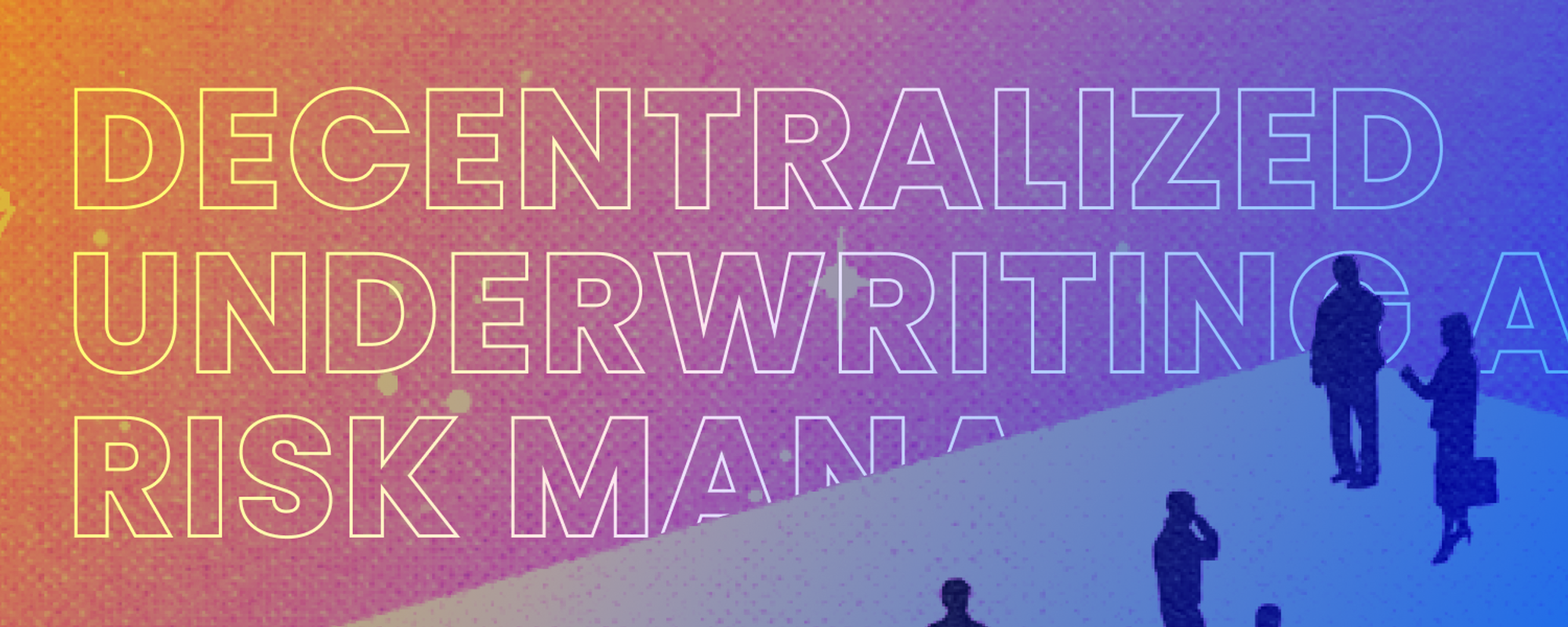In the previous chapter of this series we have discussed the two main shortcomings of Mutual Credit: problematic risk management and centralised, often uncountable administration. We have shown how participants in Mutual Credit networks are exposed to hidden credit risks, and how the administrators and gatekeepers of such systems have no “skin in the game” that would align their interests with those of their network’s members.
Solving these two problems is the main goal of the ReSource protocol, and allows rendering Mutual Credit into an autonomous, distributed DLT-protocol that holds enormous potential for making economic prosperity accessible to all.
The way the ReSource protocol achieves this resides on three pillars:
- Decentralized and accountable “gatekeeping” (underwriting and credit approval)
- The maintenance of a Network Reserve to offset accumulated risk, and
- Stabilisation mechanisms for the network’s internal currency.
Decentralized Underwriting

What you see above is the ReSource protocol’s Underwriting process. Below we’ll get into the details of each step, but in short it works as follows:
Credit applicants submit financial statements and other data points, on the basis of which an underwriting algorithm creates a credit score. This score and the applicant’s details are then broadcasted to a distributed network of Underwriters, who then compete with each other to offer the best possible credit terms.
As we explained in chapter 1 of this series, Underwriters are not the ones who extend credit, they don’t lend money in a traditional sense and certainly don’t charge interest. So you may ask yourself in what sense Underwriters set “credit terms” and how exactly they compete with each other.
While credit on ReSource does not entail compounding interest payments, users do pay transaction fees when accessing its credit product. Comparable to interest payments on traditional loans, these transaction fees change as a function of credit risk: risky applicants will pay higher transaction fees than trusted ones.
The network's Underwriters set these fees on the basis of their risk assessment. They also earn a cut from transaction fees, paid by the network’s users, but in order to do so, two things need to happen: 1. The Underwriter needs to stake and lock SOURCE to secure the new credit line (20% of the credit line’s size), and 2. The Underwriter needs to have offered the lowest transaction fee compared to her peers.
These two opposing pressures drive Underwriters to assess and price risk accurately. If the perceived risk is overpriced, they’ll be outcompeted by other Underwriters. If their transaction fee proposal is too low, them staking and risking their SOURCE deposit may turn out to have been a bad deal. Be it as it may - our “gatekeepers” now have skin in the game and are accountable for their actions.
For a more detailed overview of this process, and of how delegating stakers can provide Underwriters with liquidity to earn a passive income, refer to this process breakdown in our whitepaper.
Network Reserve and Currency Stabilisation
As we have seen above, Underwriters will lose their staked SOURCE if one of their underwritees defaults. However, this stake amounts to only 20% of the credit line’s size. To provide the network with 100% protection, the remaining 80% need to come from somewhere.
This somewhere is the network’s Reserve, and it too is funded by transaction fees. While Underwriters set transaction fees in accordance with risk and earn their fair share as a result, the remainder of fees flows into a Reserve pool. This pool, in conjunction with Underwriter’s forfeited SOURCE stakes, absorbs defaults and shields network participants from credit risk.

As we’ve shown in chapter 2 of this series, the credit risk to which participants are exposed in traditional Mutual Credit systems is mainly carried by the network’s internal currency: defaults cause inflation and dilute everyone’s purchasing power. This is where the Reserve comes in: when defaults exceed a certain threshold, the Reserve uses its SOURCE holdings to remove excess currency from circulation.
In the most naive implementation of the ReSource protocol this means that the Reserve simply offers network participants to swap the network currency against SOURCE, but more elegant and efficient methods are indeed possible and implemented by the ReSource Network - the first live instance of the ReSource Protocol.
Active Reserve Management
The Reserve of the ReSource Network is actively managed by the network’s DAO, and uses its SOURCE income to purchase in-demand items and lists them on the ReSource Marketplace.
When users purchase these items with the network’s currency, it flows back to Reserve where it can be burned or withheld for future use. This way the Reserve essentially swaps its SOURCE holdings for the network’s currency by proxy of selling goods and services to network users.
Why is this more efficient than directly buying the network’s currency? Well, this way the Reserve can use its sizable purchasing power to acquire items, goods and services at significant discounts and increase the impact of its currency stabilisation efforts by effectively doubling as a buyers' coop.
This active management allows the network to counterbalance inflation while protecting its participants’ purchasing power. The ReSource network is to date the only Mutual Credit network that possesses such a feature.
In the next chapter to this series we’ll explain how staking works on ReSource, and how you, a humble SOURCE holder with no intention of becoming an Underwriter, can participate in the network, stake SOURCE and earn rewards that are exposed to a diversified pool of creditworthy business.
Your friends at ReSource.
